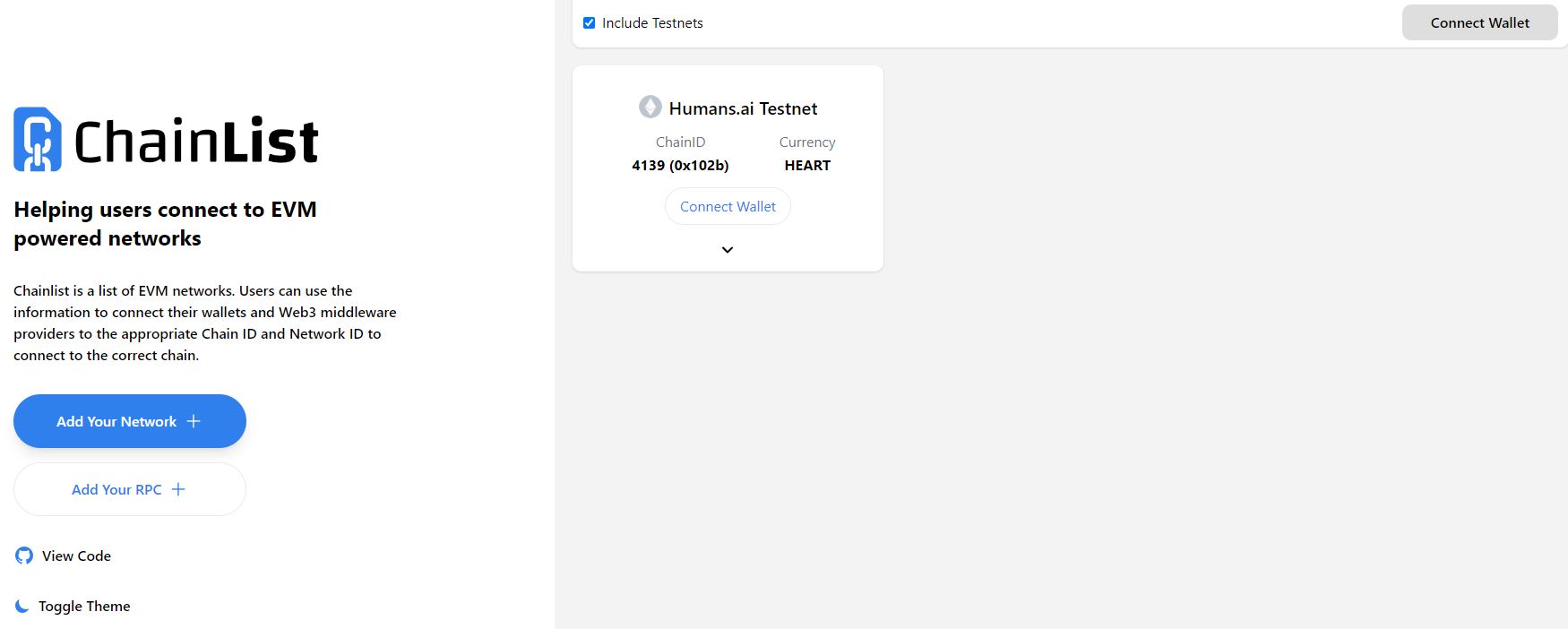Chain ID
A blockchain network is represented by a chain ID, which is a special identifier. It helps us distinguish between several blockchain networks and guarantee that transactions and communications are transmitted to the appropriate network. The format used by the Humans.ai network is identifier_EIP155-version.
Official Chain IDs
The most recent version of the software and mainnet is indicated by the Chain ID with the highest version number.
Mainnet
| Name | Chain ID | Identifier | EIP155 Number | Version Number | Active |
|---|---|---|---|---|---|
| Humans.ai Mainnet | humans_1089-1 | humans | 1089 | 1 | ✅ |
Testnet
| Name | Chain ID | Identifier | EIP155 Number | Version Number | Active |
|---|---|---|---|---|---|
| Humans.ai Testnet | humans_4139-1 | humans | 4139 | 1 | ✅ |
Using chainlist.org, you can also check up the EIP155 Chain ID.
You can also lookup the EIP155 Chain ID by referring
to chainlist.org.
The Chain Identifier
A distinct identification, or chain-id, is required for each chain. Each application must specify its own chain-id in the genesis.json fields in order to work with Tendermint.
However, Humans.ai compatible chains must have a unique structure for their chain identifiers in order to adhere to both the EIP155 and Cosmos standards for chain updates.
Structure
There are three primary parts to the Humans.ai Chain ID:
- Identifier: Unstructured string that specifies the application's name.
- EIP155 Number: Immutable EIP155
CHAIN_IDthat defines the replay attack protection number. - Version Number: Is the chain's current version number, which is always positive. To avoid network or consensus issues, this number MUST be increased each time the chain is upgraded or forked.
Format
The format for specifying a chain-id in Genesis that is Humans.ai compliant is as follows:
{identifier}_{EIP155}-{version}
The following table provides an example where the second row corresponds to an upgrade from the first one:
| ChainID | Identifier | EIP155 Number | Version Number |
|---|---|---|---|
humans_1089-1 | humans | 1089 | 1 |
